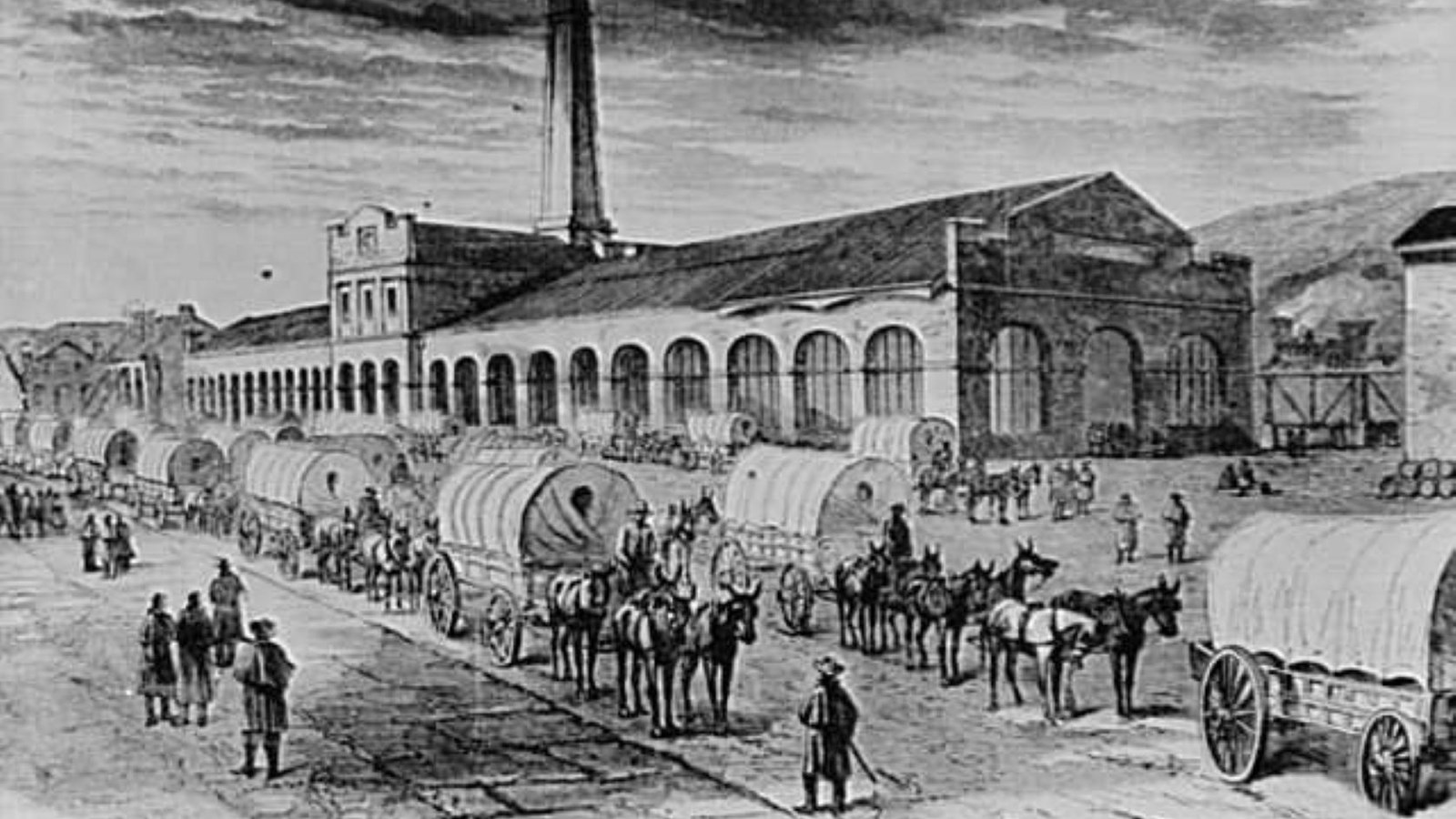Last updated: December 2, 2022
Place
Prospects of Peace 1864 Tour: The US Quartermaster Depot, 1864

Sketch by artist Alfred Waud
Historical/Interpretive Information/Exhibits
War and Christmas —it sounds like an oxymoron, almost as if the two should be mutually exclusive. And yet we know from history and from our present-day experience that the two exist side by side. Everyone is ready for peace and the journey home during December 1864, but the soldiers must complete their tasks, load the quartermaster wagons, send them to the front, end a protracted war, and free four million enslaved people.
Flagg’s Quartermaster operation had been active at Harpers Ferry throughout the Civil War, but during 1864, Harpers Ferry became a major supply center for a military campaign involving tens of thousands of troops. Burned out armory buildings were re-roofed and turned into packed warehouses. Thousands of horses were stabled in the area, and a cavalry remount camp set up in the vicinity. Supply trains of as many as 1000 wagons a day left or arrived at Harpers Ferry. The wagons, loaded and maneuvered by 300 employees (both white and Black), contained everything to feed, arm, and clothe the army. The Quartermaster General's Department was the supply section of the U.S. Army. It procured, transported, and distributed practically all military items, including clothing, blankets, tentage, horses, wagons, lumber, tools, cooking and eating utensils, nails, paint, pens, candles, and even stationery. Anything a soldier carried was either sent from home, bought, stolen, or issued from the Quartermaster.
Both the towns of Bolivar Heights and Harpers Ferry were consumed by the Quartermaster operation. Bolivar Heights had become a congested wagon park, filled with mules and swearing teamsters. Fields were white as snow with army tents and the canvas covers of hundreds of wagons and ambulances. Railroads were used to capacity. Eventually, General Sheridan ordered that all troops destined for his army should be armed at Harpers Ferry. All this happened in an environment where Confederate raiders attacked supply wagons, trains, and railroads.
